Imagine standing at the edge of Norway's Lofoten Islands, where jagged mountains rise from the sea, colourful cabins line the shores, and eagles soar overhead. This Arctic archipelago isn't just another pretty destination – it's nature at its finest.
If you’re after wish list-worthy experiences, Lofoten is the place to come. Venture here to chase the northern lights, kayak in pristine fjords, and hike trails with views that make every step worth it.
Lofoten offers all this, plus fascinating Viking heritage and more. So, what are you waiting for? Start planning your trip with this guide, which explains everything you need to know before you go. Get top tips for your visit and discover the best things to do in the Lofoten Islands.
- Let these expert-curated Lofoten Islands tours inspire your next getaway
Where are the Lofoten Islands?
The Lofoten Islands are an archipelago in Northern Norway. They are located within the Arctic Circle and extend west from the mainland into the Norwegian Sea.
Venture approximately 1,300 kilometres (807 miles) north of the Norwegian capital, Oslo, and you’ll arrive at the southern end of Lofoten. The island chain’s lofty mountains, peaceful beaches, and dramatic fjords make this a journey worth taking.
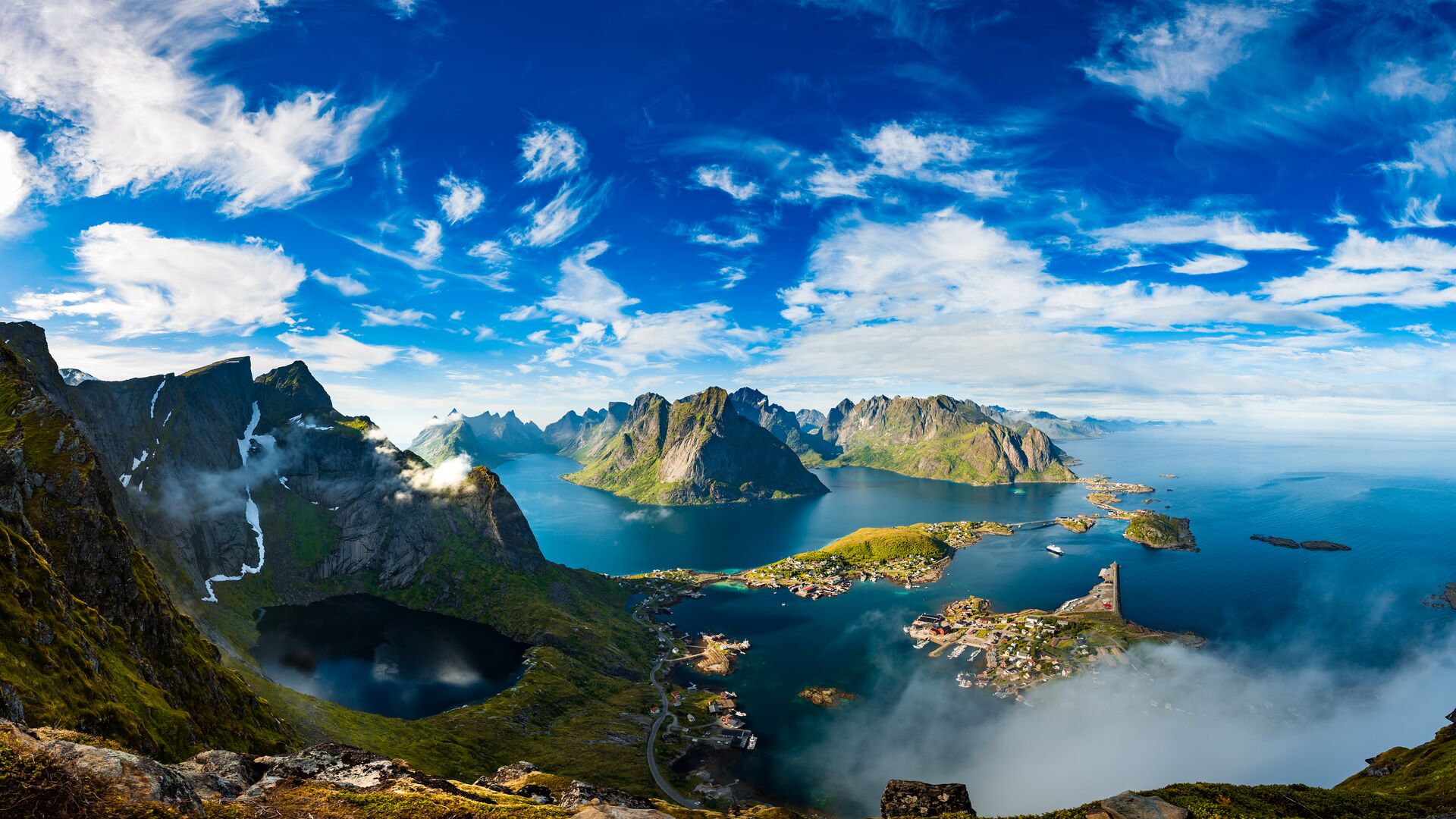
Where are the best places to go in the Lofoten Islands?
The Lofoten archipelago is made up of 5 main islands – Austvågøya, Gimsøya, Vestvågøya, Flakstadøya, and Moskenesøya – connected by bridges and causeways. Plus, at just 110 kilometres (70 miles) from north to south, you can see a lot of the region in a few days.
Here are 7 spots we recommend adding to your Lofoten itinerary to get you started.
1. Reine
Nestled in a sheltered bay beneath jagged mountains that drop straight into the sea, Reine is one of Norway’s most picturesque fishing villages. The red and yellow “rorbuer” (fishermen’s cabins) that make up Reine are scattered across several small islands between Vestfjord and Reinejord.
If you’re a keen hiker, don’t miss the walk up to Reinebringen viewpoint. On a clear day, it’s a popular vantage point for views of the village and its surrounding peaks.
Make sure to allow plenty of time to complete the steep 2-kilometre (1.25-mile) walk. With so much epic scenery to enjoy, you won’t want to rush it. Hiking boots, warm and waterproof layers, water, and snacks are essential.
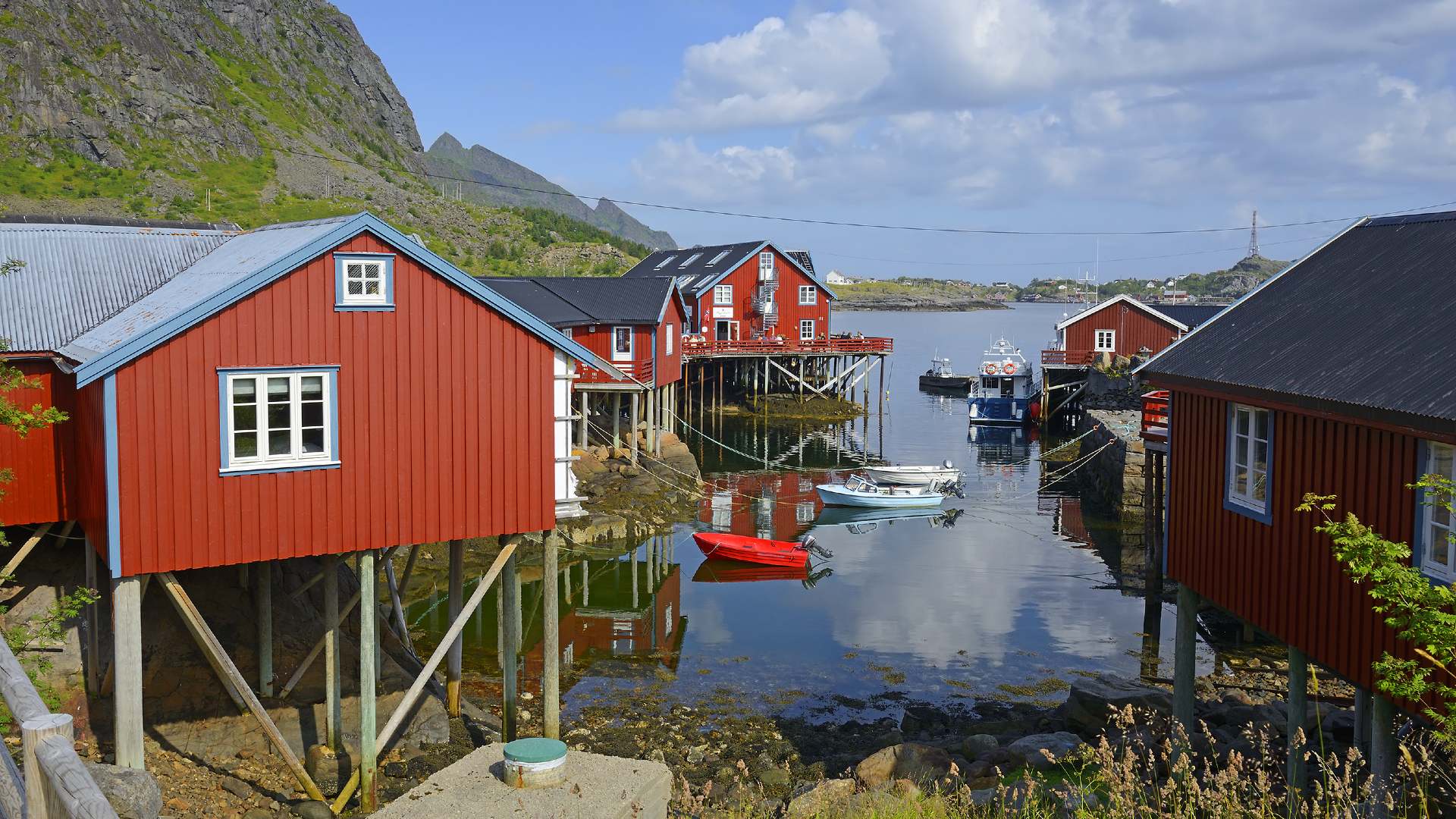
2. Å
You’ll find the tiny village of Å (pronounced “oh”) at the end of the road in southern Lofoten. While the entire island chain is renowned for its fishing heritage, it’s here that you can visit the Norwegian Fishing Village Museum.
As one of Norway’s best-preserved fishing villages, this is a great place to learn about how this way of life has developed over the past 250 years.
If you love seafood, don't leave without trying traditional local fare like stockfish and cod. Or, grab a moreish cinnamon bun from the bakery at Å, only open during the summer months.
3. Haukland Beach
If you plan to visit the island of Leknes, you won’t want to miss Haukland Beach – it’s one of Lofoten’s most beautiful and accessible beaches. Haukland is just a 10-minute drive off the E10, the archipelago’s main road, and there’s plenty of beachside parking.
Gaze up at the surrounding hills as you stroll along the pristine white sands, and perhaps dip a toe in the crystal-clear water. The beach is a popular spot for horse riding and surfing. There are also some hiking trails in the area.
After exploring, why not have a meal at the nearby café? Its floor-length windows let you watch the waves roll in as you eat.

4. Svolvær
Despite having only around 5,000 inhabitants, Svolvær is the archipelago’s largest town. It’s a great spot to stay in Lofoten if you want to base yourself in one place to explore the rest of the island chain. Plus, getting here is straightforward with plane and ferry links to the mainland.
As the region’s cultural hub, there’s plenty to keep you entertained. You could browse the North Norwegian Art Centre or visit the Lofoten War Memorial Museum. Svolvær is also a jumping-off point for activities like sea eagle safaris, fishing trips, and other guided excursions.
5. Kvalvika Beach
Kvalvika Beach is another top destination in Lofoten. Expect soft, golden sands, turquoise waters and towering cliffs. No roads lead here, so you’ll need to hike – but it’s well worth the effort!
Start your walk in the village of Fredvang. It’s just a 3-kilometre (1.8-mile) walk from here to the beach. It’s an easy-going route with mostly even trails. Remember, you’ll need to walk back to Fredvang after relaxing on the beach.
On a clear day, it’s worth hiking to Ryten, which looks down onto the beach. A return trip to the viewpoint adds 1 kilometre (0.6 miles) to the walk.

6. Henningsvær
Henningsvær is a photogenic fishing village spread across several small islands. Some locals even call it the “Venice of Lofoten”.
Home to around 500 people, Henningsvær will feel bustling compared to some of Lofoten’s tiny villages. Check out contemporary art at galleries such as Kaviar Factory. Then pop into a quirky café or browse for souvenirs like pottery, jewellery, and knitwear made by local artisans.
- Related: Must-see places in Norway
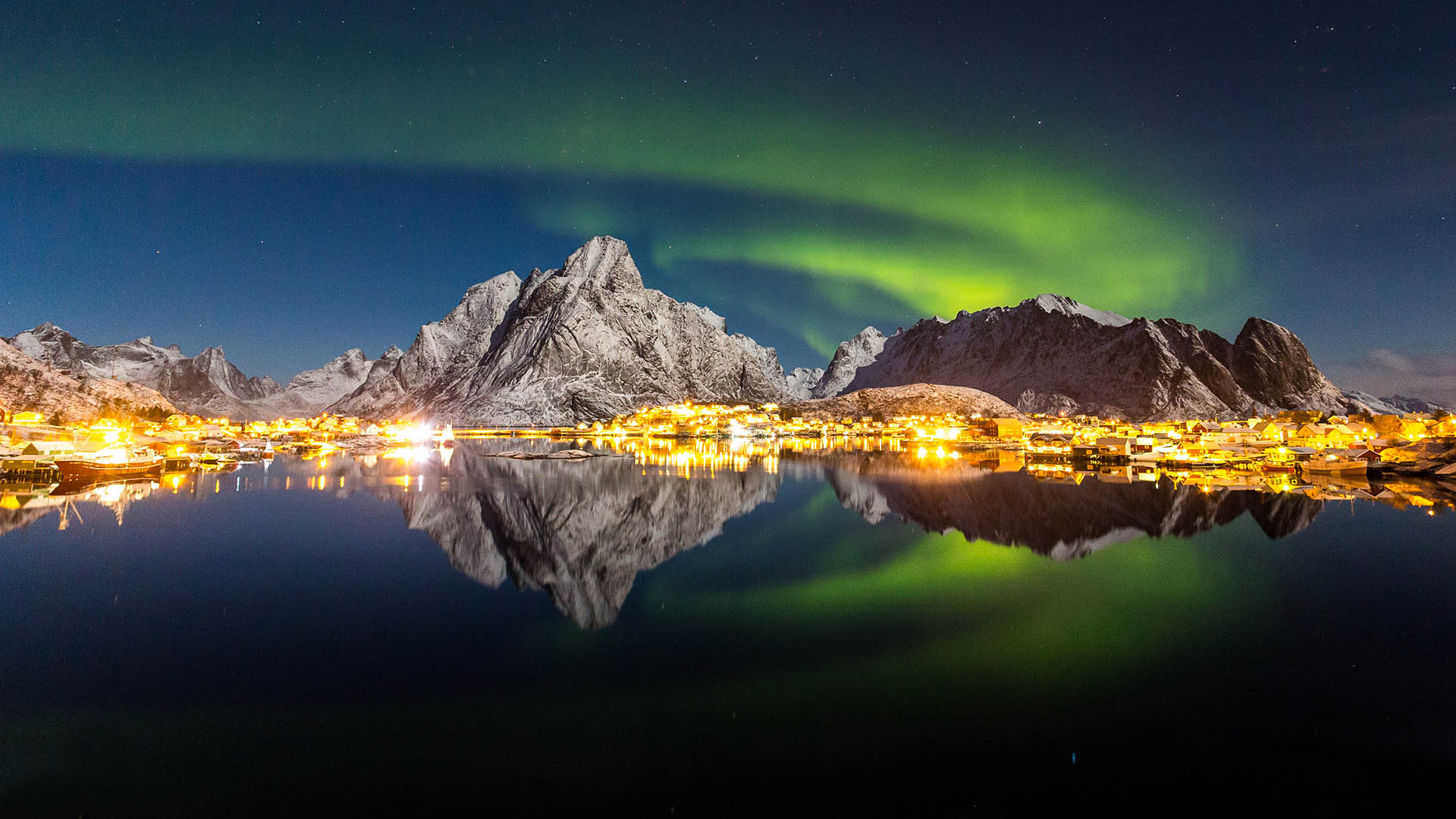
What are the top things to do in the Lofoten Islands?
Whether you’re an outdoorsy type looking for adventure or a photographer chasing your next shot, you’ll be well-catered to in the Lofoten Islands. These are just a few of the amazing things you could do when you visit Lofoten.
1. Cruise the fjords
Hop on a cruise around the Lofoten Islands, and you’ll see remote shorelines that are unreachable by car. Many Norwegian cruises will also take you beyond Lofoten to explore the majestic fjords of Northern Norway.
You could spot white-tailed eagles or even whales as you sail along the rugged coastline. So, make sure to keep your camera handy.
- Discover Norway fjord tours curated by travel experts
2. Chase the northern lights
Between September and April, the Lofoten Islands are one of the best places in Europe to glimpse the northern lights.
The archipelago’s proximity to the North Pole, long winter nights, and low light pollution create ideal conditions for glimpsing this natural wonder. Plus, if the northern lights do appear, you’ll see them with Lofoten’s stunning scenery in the background.
- Maximise your chance of spotting the aurora on a Norway northern lights tour
- Related: Best time and place to see the northern lights in Norway
3. Make the most of the midnight sun
On the other hand, visit in summer, and you’ll benefit from the long daylight hours of the midnight sun. In fact, the sun doesn’t set between the end of May and mid-July.
This gives you extra time for packing in even more adventure. Imagine heading to the beach or going for a short hike in the middle of the night.
- Experience endless daylight on a midnight sun tour of Norway
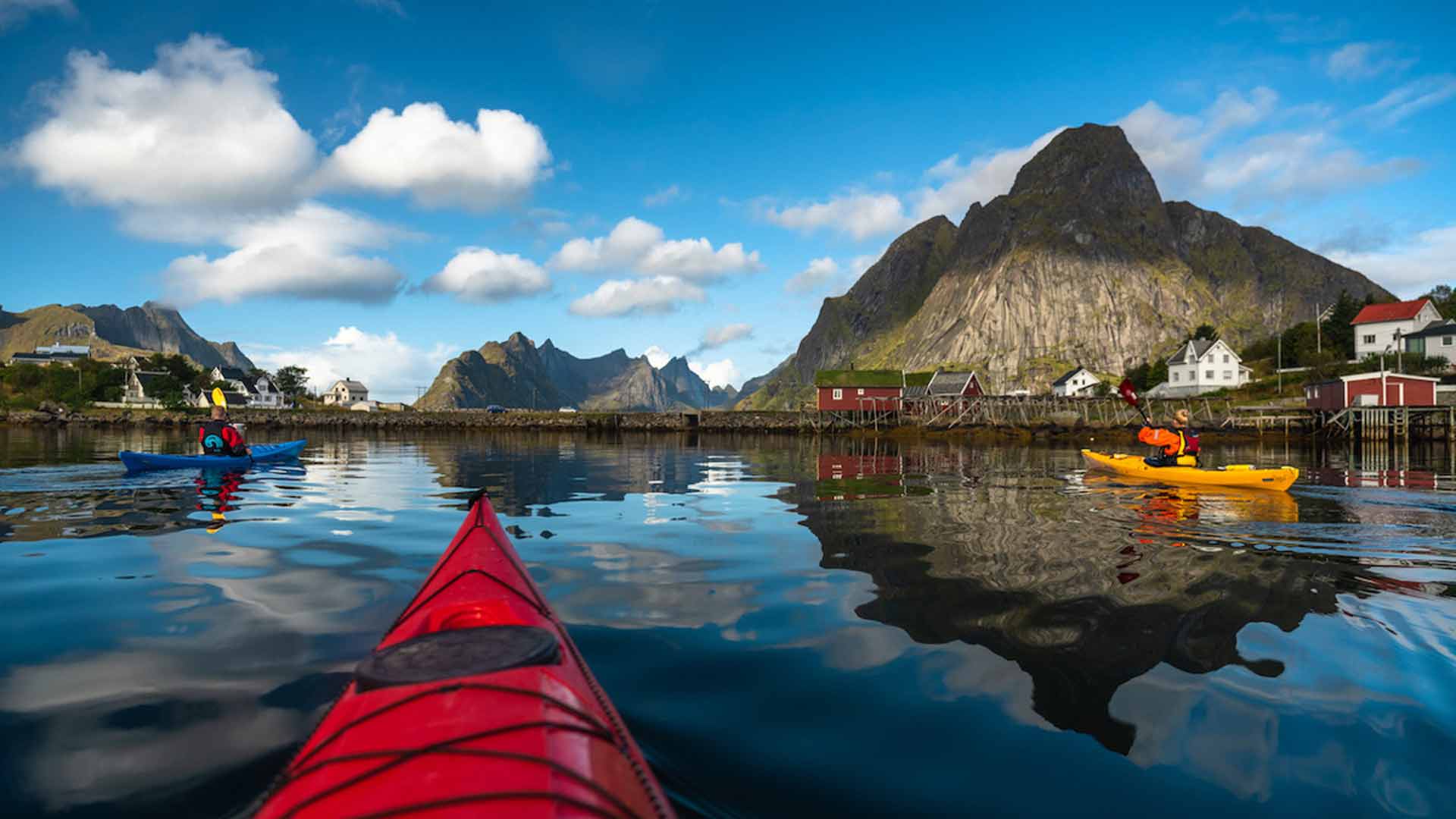
4. Try outdoor activities
Lofoten is a paradise if you love spending time outdoors. Make the most of the scenery on a clear day and enjoy popular hikes to breathtaking viewpoints like Reinebringen and Ryten.
You could also join a guided kayaking excursion or even go cold-water surfing. For something more leisurely, try fishing, horseback riding or golfing.
- Add some adventure to your trip with an active tour of Norway
5. Go wildlife-watching
The wild landscapes of the archipelago are home to creatures like the European moose, white-tailed eagle and puffins.
While moose are relatively elusive, your chances of spotting eagles are high – there’s a healthy population in the area. One of the best ways to see them in action is to go on an eagle safari by boat.
Top tip: When you encounter wildlife, keep your distance and take extra care not to disturb animals during the breeding season (May to July).
6. Learn about Vikings
It’s not all about nature though – the Lofoten Islands also have fascinating Viking heritage.
Visit the Lofotr Viking Museum to see the world’s biggest reconstructed longhouse. You’ll learn what life was like for the people who lived here over the past 1,000 years. See a recreated Viking ship, delve into Norse folklore, and try your hand at axe-throwing or archery.
- Soak up local history on a culture tour of Norway
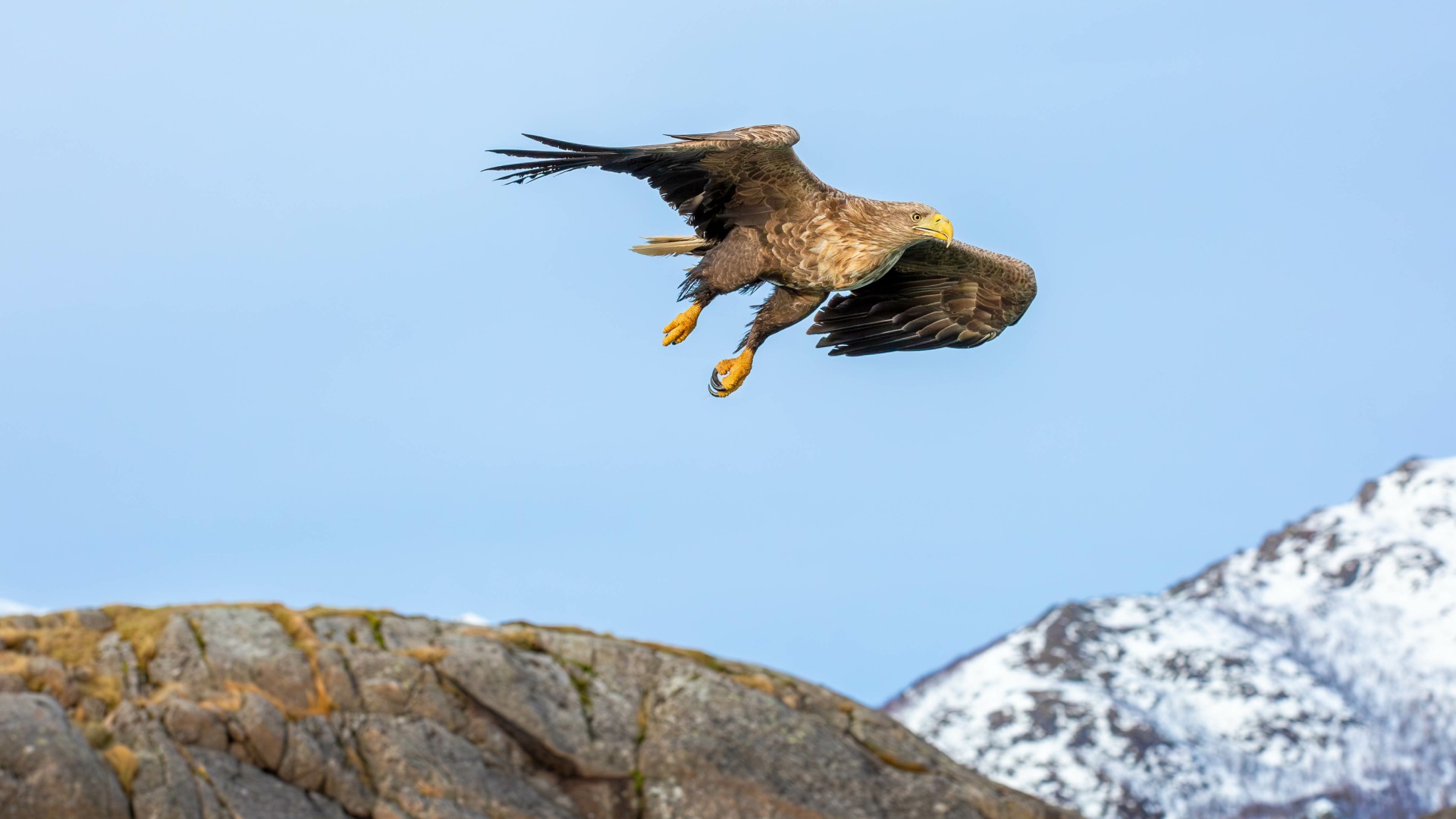
What’s the weather like in the Lofoten Islands?
Given their Arctic location, you might expect the Lofoten Islands to be cold and snowy year-round. But the Gulf Stream keeps conditions here milder than locations like Nunavut in Canada, which sits at a similar latitude.
Winter in the Lofoten Islands lasts from October to March, with cold temperatures and regular snowfall. Temperatures typically range from -5–3°C (23–37°F). While snow is common, it can also rain, especially around sea level.
Spring (April to May) and autumn (September) bring milder weather, but snow is still possible, particularly in the mountains.
During the summer months of June to August, average temperatures can get up to 10–16°C (50–61°F). This is the time to travel if you’re planning lots of outdoor adventures.
Good to know: Pack warm and waterproof layers no matter when you’re travelling. The weather in Norway can change quickly at any time of year, so it’s best to come prepared for a range of conditions.
- Hunt for the northern lights on a Norway winter trip
- Related: What to bring to Norway
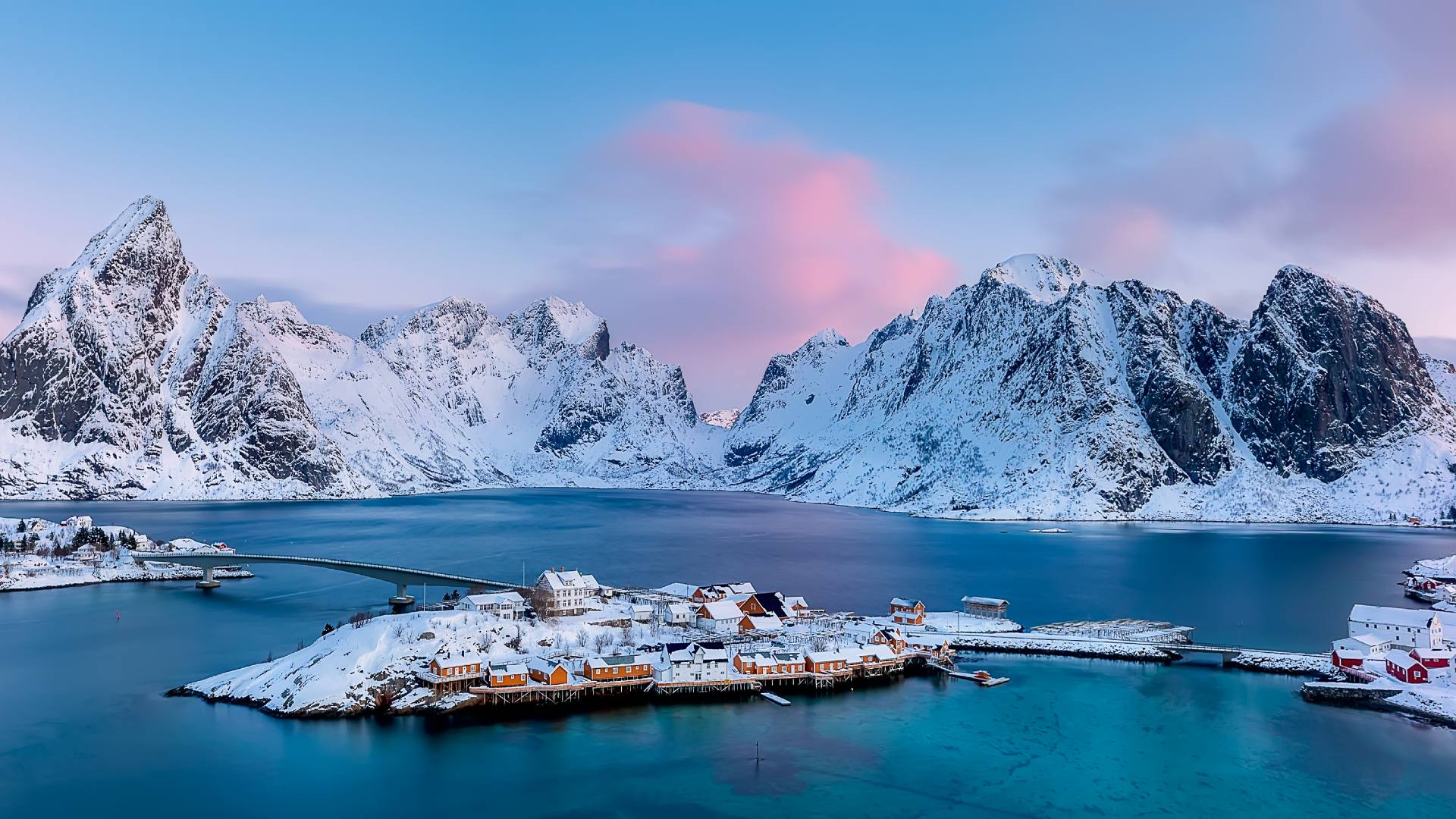
When to visit the Lofoten Islands
The Lofoten Islands experience a lot of seasonal variation, so the best time to visit depends on what you want to do on your trip.
If you’re after time outdoors in mild temperatures, travel between May and September. The longer daylight hours in spring, summer, and early autumn are ideal for activities like hiking, wildlife-watching, and kayaking.
Summer in Norway is particularly special, as the midnight sun brings 24-hour daylight to the archipelago. With no sunset, you can soak up the scenery into the night.
Meanwhile, winter’s long nights are perfect for chasing the northern lights. Brave the cold temperatures, and Lofoten could reward you with a glimpse of the aurora borealis dancing above snowy peaks. Autumn and winter are also ideal if you want to explore with fewer other visitors around.
- Experience the midnight sun on a summer tour of Norway
- Related: When is the best time to visit Norway?
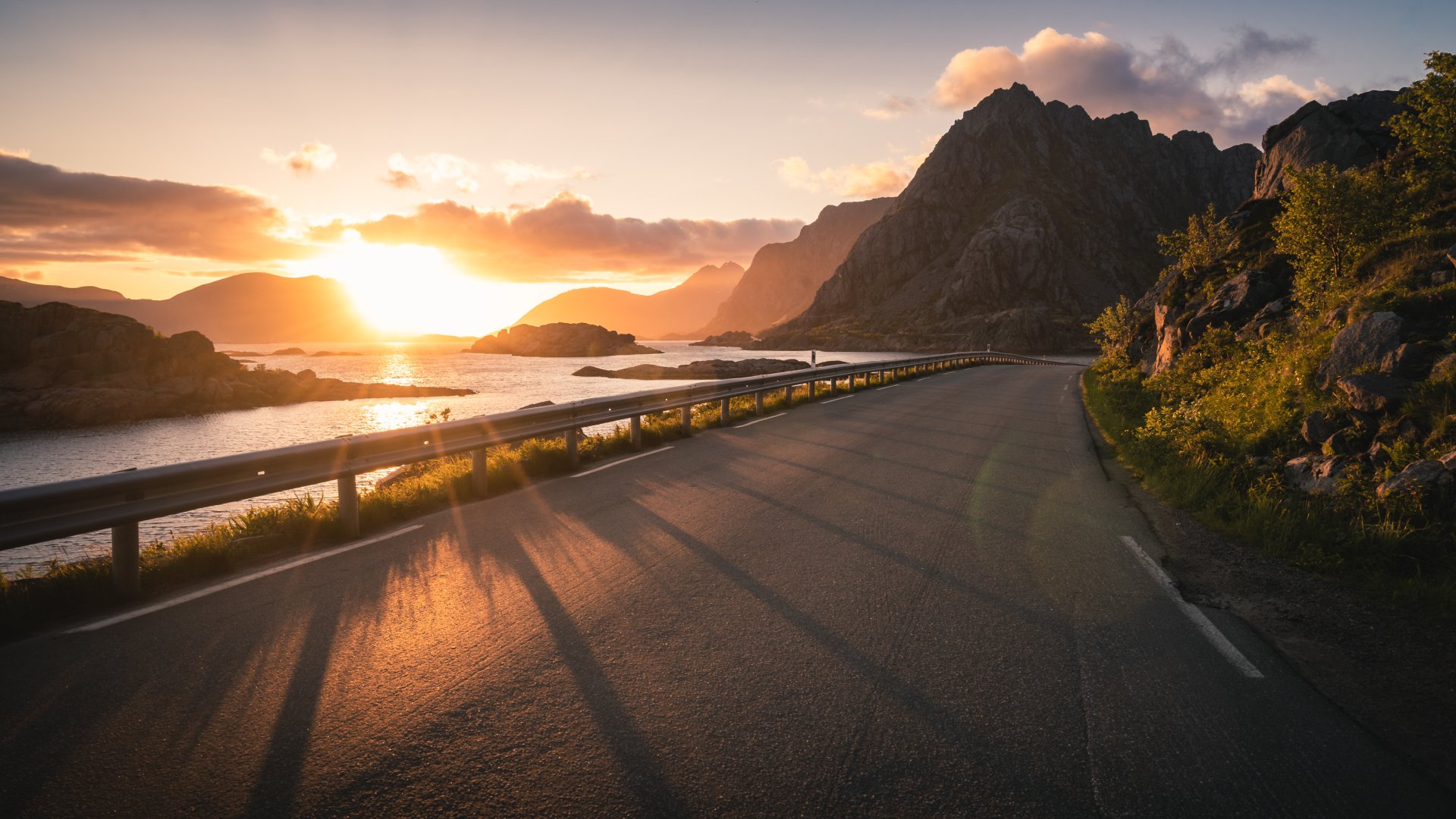
How to get to the Lofoten Islands
Despite their remote location, getting to the Lofoten Islands is easier than you might think.
You can fly to Lofoten from the Norwegian mainland. There are regular 30-minute flights direct from Bodø to Svolvær, the archipelago’s main airport. You can also find flights from Oslo to Svolvær via Bodø. The total flight time is around 2 hours and 25 minutes.
Driving to Lofoten is also an option. If you’ve picked up a rental car elsewhere in Norway, make your way to Bodø and hop on the car ferry to Moskenes. The journey takes around 3 hours and 30 minutes, and you’ll arrive at the southern end of the island chain.
From here, you can follow the E10 road north towards Svolvær and beyond. This is a stunning coastal drive with bridges and causeways connecting the islands.
If you aren’t travelling by car, there’s also a passenger-only express ferry route to Moskenes. Once you arrive, you could use the public bus service that follows the E10 to get around. That said, hiring a car is the best way to travel if you want to take detours and explore at your own pace.
- Related: Best Norwegian road trips
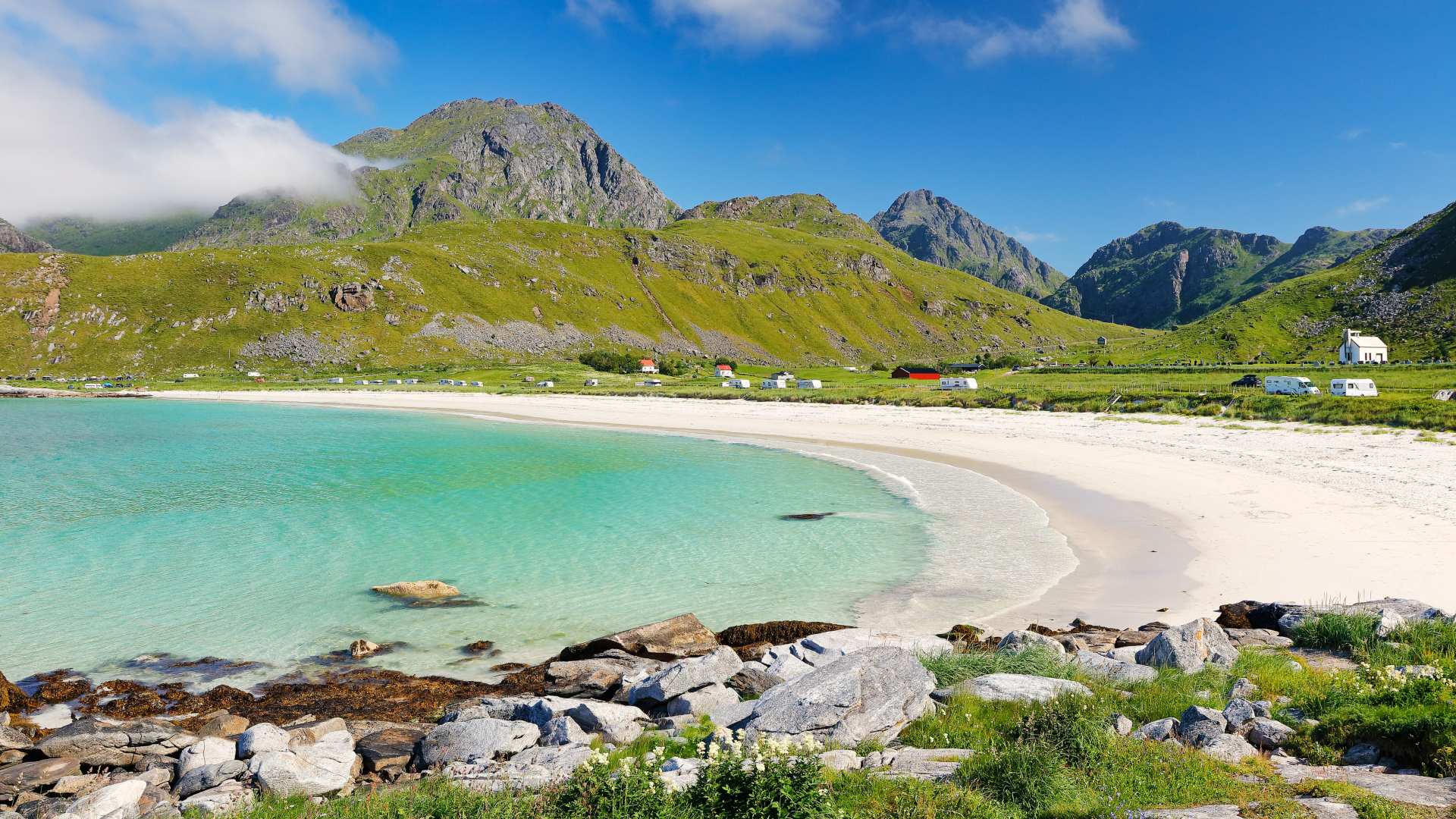
Explore the Lofoten Islands with Nordic Visitor
Now we’ve sparked your wanderlust, why not make your travel dreams a reality with a Lofoten Islands tour?
Book with us, and our regional experts will organise everything for you, including your accommodation and local transport. Take your pick from self-drive, train, or partially-guided tours that visit the Lofoten Islands. Or choose a Norwegian cruise with time in this stunning archipelago.
However you decide to travel, expect personal recommendations, a hand-marked route map, and an itinerary created with our insider insight. You’ll also get a travel guide packed with top attractions and access to 24/7 support during your trip.
Get in touch with us to start planning your escape to the Lofoten Islands.
